
Ultima is a series of open world fantasy role-playing video games from Origin Systems, created by Richard Garriott. Electronic Arts has owned the brand since 1992. The series had sold over 2 million copies by 1997.

The Starpath Supercharger is an expansion peripheral cartridge created by Starpath, for playing cassette-based proprietary games on the Atari 2600 video game console.
Copy protection, also known as content protection, copy prevention and copy restriction, is any measure to enforce copyright by preventing the reproduction of software, films, music, and other media.

Richard Allen Garriott is a British-born American video game developer, entrepreneur and private astronaut.

Akalabeth: World of Doom is a role-playing video game released in 1979 for the Apple II. It was published by California Pacific Computer Company in 1980. Richard Garriott designed the game as a hobbyist project, which is now recognized as one of the earliest known examples of a role-playing video game and as a predecessor of the Ultima series of games that started Garriott's career. Garriott is the sole author of the game, with the exception of title artwork by Keith Zabalaoui.
Chuck Bueche is a video game programmer best known for co-founding Origin Systems and his involvement with the Ultima video game series.
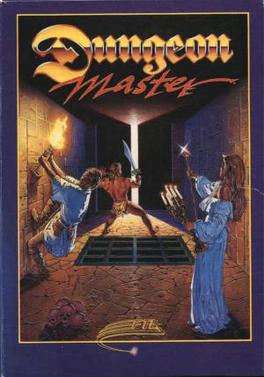
Dungeon Master is a role-playing video game featuring a pseudo-3D first-person perspective. It was developed and published by FTL Games for the Atari ST in 1987, almost identical Amiga and PC (DOS) ports following in 1988 and 1992.

Temple of Apshai is a dungeon crawl role-playing video game developed and published by Automated Simulations in 1979. Originating on the TRS-80 and Commodore PET, it was followed by several updated versions for other computers between 1980 and 1986.
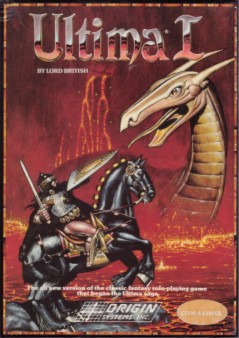
Ultima, later known as Ultima I: The First Age of Darkness or simply Ultima I, is the first game in the Ultima series of role-playing video games created by Richard Garriott, originally released for the Apple II. It was first published in the United States by California Pacific Computer Company, which registered a copyright for the game on September 2, 1980 and officially released it in June 1981. Since its release, the game has been completely re-coded and ported to many different platforms. The 1986 re-code of Ultima is the most commonly known and available version of the game.
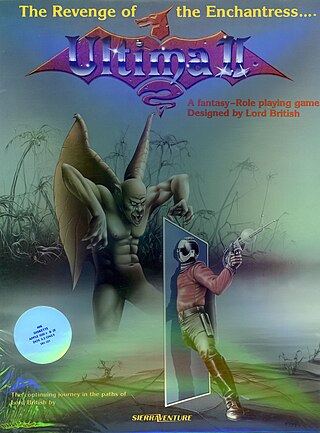
Ultima II: The Revenge of the Enchantress, released on August 24, 1982, for the Apple II, is the second role-playing video game in the Ultima series, and the second installment in Ultima's "Age of Darkness" trilogy.
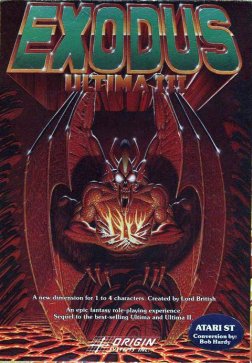
Ultima III: Exodus is the third game in the series of Ultima role-playing video games. Exodus is also the name of the game's principal antagonist. It is the final installment in the "Age of Darkness" trilogy. Released in 1983, it was the first Ultima game published by Origin Systems. Originally developed for the Apple II, Exodus was eventually ported to 13 other platforms, including a NES/Famicom remake.

Ultima IV: Quest of the Avatar, first released in 1985 for the Apple II, is the fourth in the series of Ultima role-playing video games. It is the first in the "Age of Enlightenment" trilogy, shifting the series from the hack and slash, dungeon crawl gameplay of its "Age of Darkness" predecessors towards an ethically-nuanced, story-driven approach. Ultima IV has a much larger game world than its predecessors, with an overworld map sixteen times the size of Ultima III and puzzle-filled dungeon rooms to explore. Ultima IV further advances the franchise with dialog improvements, new means of travel and exploration, and world interactivity.
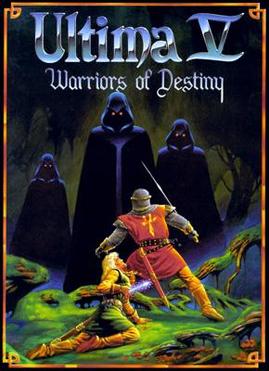
Ultima V: Warriors of Destiny is the fifth entry in the role-playing video game series Ultima released in March 1988. It is the second in the "Age of Enlightenment" trilogy. The game's story takes a darker turn from its predecessor Ultima IV. Britannia's king Lord British is missing, replaced by a tyrant named Lord Blackthorn. The player must navigate a totalitarian world bent on enforcing its virtues through draconian means.

The APF Imagination Machine is a combination home video game console and home computer system released by APF Electronics Inc. in late 1979. It has two separate components, the APF-M1000 game system, and an add-on docking bay with full sized typewriter keyboard and tape drive. The APF-M1000 was built specifically to compete with the Atari 2600. The full APF Imagination Machine, including the APF-M1000 console and the IM-1 computer component, originally sold for around US$599.
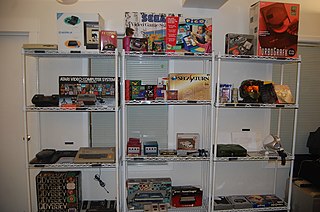
Video game collecting is the hobby of collecting and preserving video games, video game consoles, and related memorabilia. Most video game consoles, and their games, are considered to be collectors' items years after their discontinuation due to their functional longevity and cultural significance. Collectors usually narrow their search to games holding characteristics they enjoy, such as being published for a specific video game console, being of certain genre, or featuring a specific character.
Ghost Manor is a horror video game released by Xonox in 1983 for the Atari 2600 and VIC-20. It was packaged in a double ended cartridge and a cassette tape along with one of three other games in an effort to appeal to budget conscious buyers who would purchase two games for the price of one cartridge and one cassette tape. There was also a more limited release of single ended cartridges and cassette tapes containing Ghost Manor by itself. The double ended cartridges and cassette tapes paired Ghost Manor with the platform game Spike's Peak, the fighting game Chuck Norris Superkicks, and a strategy game called Artillery Duel.
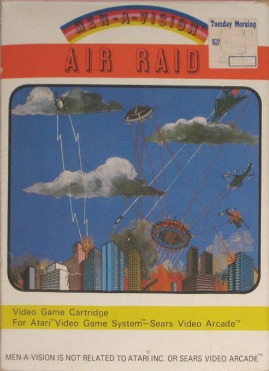
Air Raid is a 1982 shoot 'em up published for the Atari 2600 by Men-A-Vision, the only game released by the company. The cartridge is a blue T-handle design with a picture of flying saucers attacking a futuristic city. It had extremely limited distribution, making it highly sought after by video game collectors.

Dandy is a dungeon crawl maze video game for Atari 8-bit computers published by the Atari Program Exchange in 1983. It is one of the first video games with four-player, simultaneous cooperative play. Players equipped with bows and unlimited arrows fight through a maze containing monsters, monster spawners, keys, locked doors, food, and bombs in search of the exit leading to the next level. If a player dies, they can be revived by finding and shooting a heart. The game includes an editor for making new dungeons.
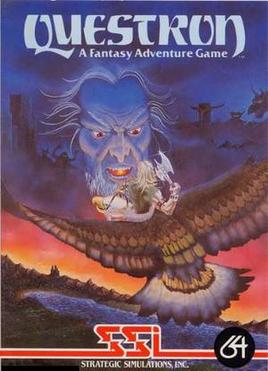
Questron is a 1984 game from Strategic Simulations, the first fantasy title from a company known for computer wargames. It was written by Charles Dougherty and Gerald Wieczorek and released for the Apple II, Atari 8-bit computers, and Commodore 64. A sequel, Questron II, was released in 1988.















